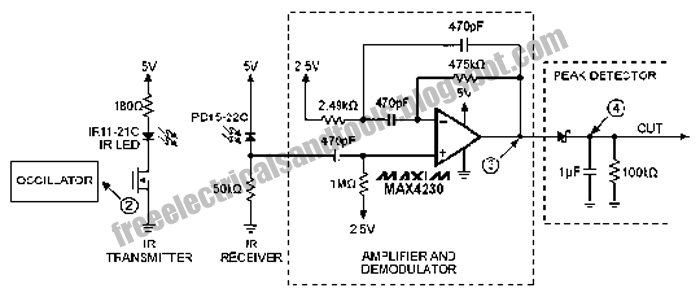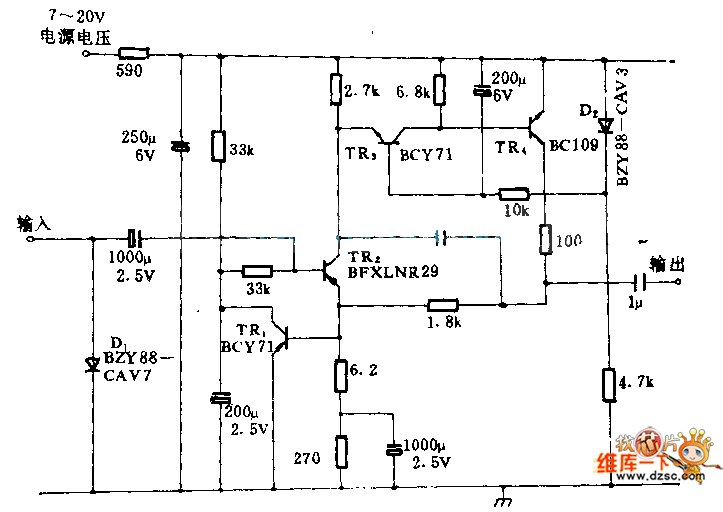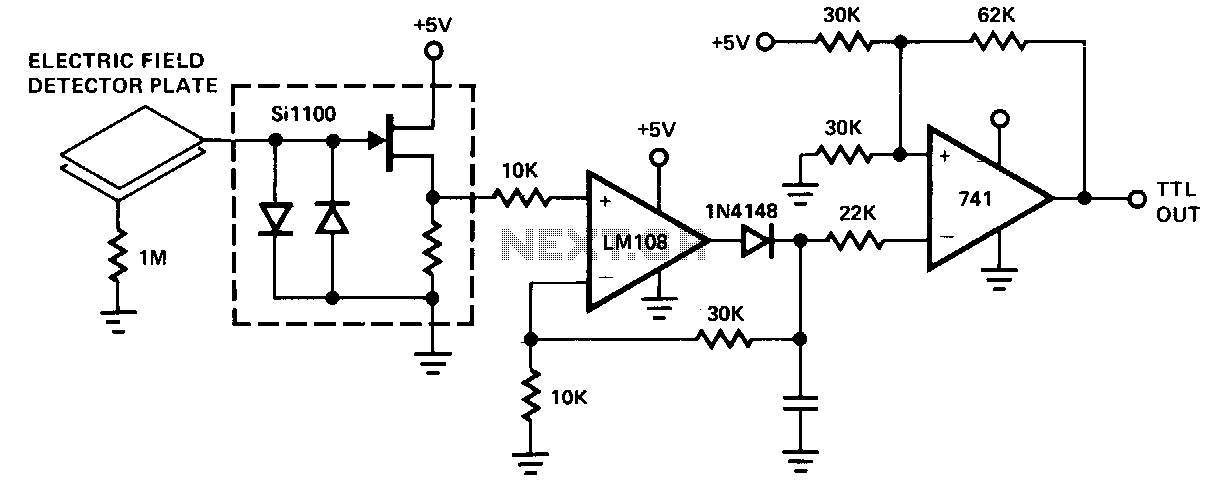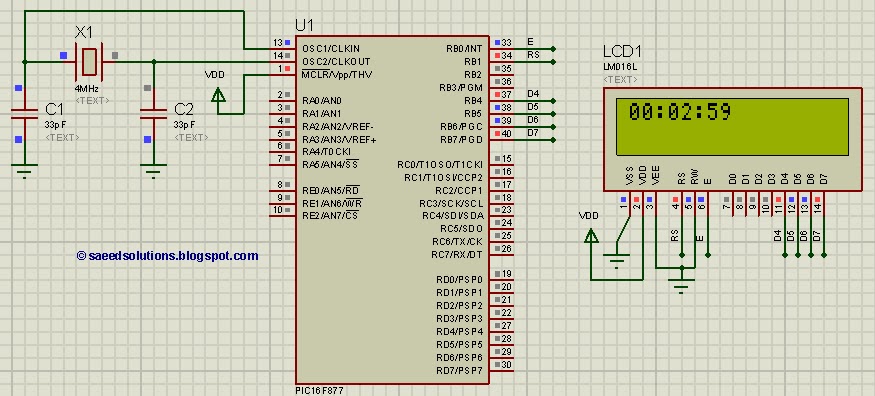
Infrared Proximity SensorCircuit Based On The MAX4230 IC

The following circuit illustrates an Infrared Proximity Sensor Circuit Diagram. This circuit is based on the MAX4230 integrated circuit. Features include a 10 kHz oscillator.
The Infrared Proximity Sensor Circuit utilizing the MAX4230 integrated circuit is designed to detect the presence of nearby objects through the use of infrared light. The core functionality of this circuit is established by the oscillator, which operates at a frequency of 10 kHz, generating a modulated infrared signal.
The MAX4230 is a precision operational amplifier that is utilized in this circuit for its high speed and low noise characteristics, making it suitable for processing the signals received from the infrared emitter and detector. The circuit typically includes an infrared LED that emits light, which reflects off nearby objects and is detected by a photodiode or phototransistor.
The output from the photodiode is fed into the MAX4230, where it is amplified. The amplified signal is then processed to determine if an object is within a specified proximity. A comparator stage may be integrated to compare the amplified signal against a threshold level, resulting in a digital output that indicates the presence or absence of an object.
Additional components, such as resistors and capacitors, are included in the circuit to set the gain of the amplifier, filter out noise, and stabilize the oscillator. The design allows for adjustable sensitivity, enabling the sensor to be fine-tuned for different applications.
This Infrared Proximity Sensor Circuit can be employed in various applications, including object detection in robotics, automated lighting systems, and safety mechanisms in industrial environments. Its compact design and efficient operation make it a versatile choice for proximity sensing tasks.The following circuit shows about Infrared Proximity Sensor Circuit Diagram. This circuit based on the MAX4230 IC. Features: 10kHz oscillator .. 🔗 External reference
The Infrared Proximity Sensor Circuit utilizing the MAX4230 integrated circuit is designed to detect the presence of nearby objects through the use of infrared light. The core functionality of this circuit is established by the oscillator, which operates at a frequency of 10 kHz, generating a modulated infrared signal.
The MAX4230 is a precision operational amplifier that is utilized in this circuit for its high speed and low noise characteristics, making it suitable for processing the signals received from the infrared emitter and detector. The circuit typically includes an infrared LED that emits light, which reflects off nearby objects and is detected by a photodiode or phototransistor.
The output from the photodiode is fed into the MAX4230, where it is amplified. The amplified signal is then processed to determine if an object is within a specified proximity. A comparator stage may be integrated to compare the amplified signal against a threshold level, resulting in a digital output that indicates the presence or absence of an object.
Additional components, such as resistors and capacitors, are included in the circuit to set the gain of the amplifier, filter out noise, and stabilize the oscillator. The design allows for adjustable sensitivity, enabling the sensor to be fine-tuned for different applications.
This Infrared Proximity Sensor Circuit can be employed in various applications, including object detection in robotics, automated lighting systems, and safety mechanisms in industrial environments. Its compact design and efficient operation make it a versatile choice for proximity sensing tasks.The following circuit shows about Infrared Proximity Sensor Circuit Diagram. This circuit based on the MAX4230 IC. Features: 10kHz oscillator .. 🔗 External reference





